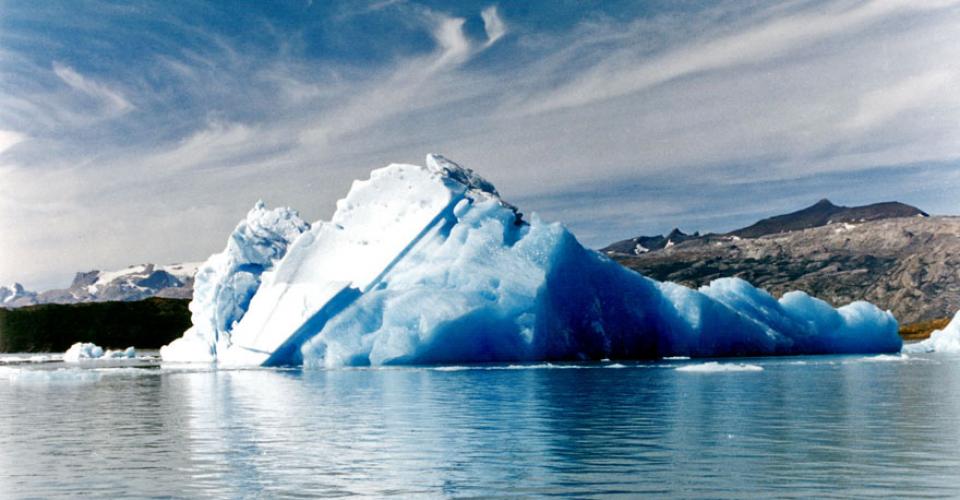Coolest experience yet for science teacher
28/07/2014Biology teacher SARAH JOHNS travelled to Antarctica as part of an Endeavour Teacher Fellowship with marine scientist DR JONATHAN BANKS.
Sarah Johns has worked as a secondary science and biology teacher for the past 14 years. She is currently teaching at Nelson College for Girls and, as a recent Endeavour Fellow, was hosted by Dr Jonathan Banks, a senior scientist at Cawthron Institute.
The objectives of the RS Endeavour Teacher Fellowship are:
1. For teachers to gain new and up-to-date knowledge which will enhance teaching and learning.
2. To develop leadership capacity in early and mid-career teachers
3. To give teachers the opportunity to experience how science, mathematics and technology are used outside teaching.
Here, Sarah writes about her experience working as a scientist in Antarctica:
I travelled to Scott Base for the 2013/14 field season. Participating in the project has given me not only a rare insight in to Antarctic research, but also the opportunity to acquire new skills such as riding a snowmobile, checking remote monitoring equipment, the collection of faecal samples from Weddell seals and assisting with and drilling holes through 3 metre thick ice for fishing. Scott Base is the centre from which large numbers of scientific events are organized. Logistics of coordinating personnel, travel, food, shelter, training, communication and safety in a harsh environment is huge. In the 2013/14 summer, for example, a variety of research events on fish, glaciers, microbes, lichens and mosses, marine invertebrates, penguins, the dry valleys, climate, Antarctic soils, seals, ice, geomagnetism, algae and historic sites took place. The field training taught me to assemble tents, build toilet blocks, mountain and ice travel, first aid, field cooking, radio protocol, use survival bags, and how to keep warm and safe. This gave me the confidence to trust in my training and equipment to work and live in this extreme environment. I now have an appreciation for how everyday jobs in preparation for living and working in the field can be quite time-consuming and labour intensive.
Getting the nano-tweezers into the DNA mixture
I have used a range of molecular techniques while working at the Cawthron Institute to identify the seals’ and penguins’ prey. Using DNA isolation techniques I extracted about 5 millilitres of prey DNA from the faeces of approximately 30 separate animals. This material will be used for next generation sequencing, a relatively new technique that is analogous to using millions of “nano-tweezers” to separate and identify individual DNA molecules from the DNA mixture. The resulting collection of DNA reads will be compared with a reference DNA database to determine what the seals and penguins were eating over Christmas and the New Year. I can confidently say that I now have an in-depth understanding of molecular technologies such as DNA extraction, PCR and gel electrophoresis. The DNA isolation from faeces used a combination of precise physical and chemical methods. The polymerase chain reaction (PCR) is another biochemical technology that I used to amplify the purified DNA to generate millions of copies of a prey DNA contained in the faeces.
This first-hand experience has also given me a much greater understanding of the principles and procedures used in PCR. The alternately heating and cooling of the PCR sample through a defined series of temperature steps achieves the desired outcome. DNA concentration was determined in a spectrophotometer by measuring the intensity of absorbance of a dye that binds to DNA and comparing the reading to a standard curve generated from known DNA concentrations’ also used several bioinformatics strategies; eg, downloading DNA sequences from international databases such as GenBank, manipulation and annotation od the sequences using software such as Genius SIS, BioEdit and Clustal X.
While I had a background in all of these techniques, being hands-on has given me a greater understanding of the links between these applications. Access to modern biotechnologies is often expensive and largely inaccessible from the classroom. To teach content about a subject such as genetic manipulation without having ever participated means that demonstrating key points in the classroom is very limited. Extracting DNA, carrying out PCR, use Next Generation Sequencing, a relatively new technique, to determine what the seals and penguins have been eating is invaluable.
While working at the Cawthron Institute, I have had the opportunity to attend lectures, and work alongside scientists in the lab and out in the field. I’ve had many opportunities to contribute in a range of scientific field activities other than what was directly linked to my original Antarctic-related objectives outlined in my proposal. I have assisted with the collection of data during research associated with the bio-control of pontoon fouling at the Nelson marina, recoded water quality readings along the Maitai river, participated in a field research party investigating cyanobacteria blooms found on a lake near Kaikoura, contributed to a literature review on the effects of green-lipped mussels on alleviating symptoms of arthritis in animals, spawned mussels, toured the taxonomy and microbiology labs, and much more.
This has given me an opportunity to see and think about the active use of science in real-life contexts and gain important insights into how science serves societal needs. These will serve as excellent contexts for my return to the classroom.
I intend to foster my relationship with the Cawthron Institute. On my return to the classroom, I am responsible for the pedagogical format and content of my science classes, but by maintaining links between Nelson College for Girls and Cawthron, we can further develop and provide students’ access to up-to-date science knowledge, expertise, resources and help my learners see science in authentic contexts, support them to form positive relationships with people in the science community and provide role models that inspire them to “see themselves” in science. Although this would be beneficial to my students, there are a variety of other drivers, including recruitment of future scientists, raising the profile of the Cawthron Institute and improving community engagement.
I have had the time of my life and I can’t wait to get back into the classroom to share it.
- Sarah Johns, 2014
Jonathan Banks
Dr Jonathan Banks is a marine scientist at Nelson’s Cawthron Institute. He and Sarah worked together through the Royal Society Endeavour Fellowship-- an experience he says was mutually beneficial.
“I know Sarah learned a lot through the work, but what was surprising about hosting the Fellowship, was how much I learned too,” he says. “It’s certainly been a two-way experience.”
He says Sarah brought with her many things that were useful to Cawthron itself: “Particularly the social media side of things. I don’t use that in my everyday work. But it amazed me how she gathered together such a large network of interested people, following what we were doing.”
Jonathan’s day-to-day work at the Institute is to monitor water quality, in particular faecal contamination in marine environments and fresh water. He employs genetic data to investigate contamination sources, in order to help mitigate them.
He had been approached by a former colleague to help with the genetic component of a research project in Antarctica, which had funding from the New Zealand Antarctic Institute.
Shortly after that, Sarah sent an expression of interest to Cawthron and Jonathan realised she would be an ideal candidate for helping undertake the research.
Taking the work back into the classroom
The Fellowship equipped Sarah with new skills to take back into the classroom, says Jonathan.
“I think she can take a lot of practical experience back with her to school, such as practical genetics techniques, and how different processes fit together throughout a project.
“Also, the bigger picture of what is generally involved in a large science research project-- the trials and tribulations, and the pitfalls that can happen along the way. Sometimes it’s almost as though the planets have to come into alignment for a project to go smoothly,” he says. “That is itself is an authentic experience to take into the classroom.”

























Post your comment
Comments
No one has commented on this page yet.
RSS feed for comments on this page | RSS feed for all comments